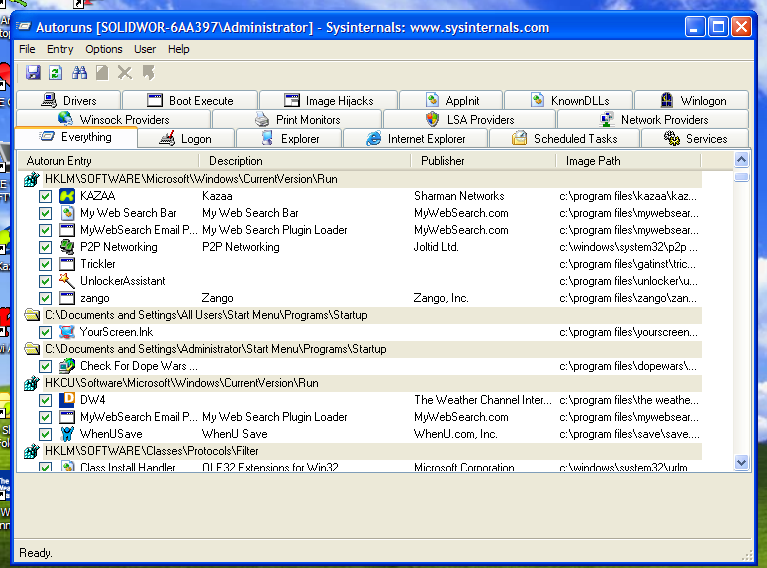

- SYSINTERNALS PROCESS MONITOR TO FIND PROGRAM NOT RUNNING DOWNLOAD
- SYSINTERNALS PROCESS MONITOR TO FIND PROGRAM NOT RUNNING WINDOWS
If an application is either not starting, or crashes, and no Application Error event ID 1000 is logged in the Windows Application log, then it is usually a result of a first-chance exception. Hence, the name "second-chance exception". If a debugger (WinDBG, DebugDiag, ProcDump, etc.) is attached to the application, it will be given a second chance to deal with the exception (typically, by saving a memory dump, which will allow further investigation). injection of a Symantec user-mode component), it will crash. If an application is unable to handle an exception, whether by error of its own or through outside interference (e.g. More often than not, an application will succesfully handle such an exception (if that were not the case, applications would be crashing all the time).

As a simple example, a console application may allow to enter Y or N in response to a question, but what if the user enters any other character? If the programmer would not take this possible exception into account, the application would crash. This exception is called a "first-chance exception", as the application first gets a chance to handle the exception through its exception handler. This is very useful in scenarios where partial failures are expected and it is not desirable to fail an entire operation just because one of several optional parts failed. All it takes is the right tools or utilities.When an exception is raised in an application, its exception handler may correct or ignore the condition, rather than allow a failure to propagate up through intervening layers. In other words, Process Explorer correctly reports the time the process was first started, not after you brought your computer out of hibernation.Īs you can see, having this type of information when troubleshooting can be a big help in fixing problems. Keep in mind, if you hibernate your computer, it does not effect the time and date listed in Process Explorer. With this information I can determine how long Firefox has been running and and when it was started based on when the operating system was booted. In the above example Firefox was started at 6:53:15 AM on. Listed will be the date and time the process was started. Make sure the Image tab is selected, and look for the Started field. Now to find when a process started, just double click on a process, (in my example I clicked on Firefox) to open the properties page. First I like to sort the processes by alphabetical order by clicking on the Process column. While it may look daunting, don't let Process Explorer scare you. Once Process Explorer starts you will see something similar to the screen shot below: Now go to the folder where Process Explorer was unzipped, and just double click on procexp.exe to run it. NOTE: you can also run the tool directly from the Windows Sysinternals site by clicking the Run Process Explorer link.Īfter downloading is completed, go ahead and unzip the file ProcessExplorer.zip to your desktop (or to a folder on your hard drive).
SYSINTERNALS PROCESS MONITOR TO FIND PROGRAM NOT RUNNING DOWNLOAD
To get started, download Process Explorer from Microsoft Windows Sysinternals site by clicking on the Download Process Explorer link found on the right side of the page.

Process Explorer runs on many versions of Windows including XP, Vista and Windows 7, and does not need to be installed. To find when a Windows process started and how long it has been running, I like to use Windows Sysinternals tool, Process Explorer.


 0 kommentar(er)
0 kommentar(er)
